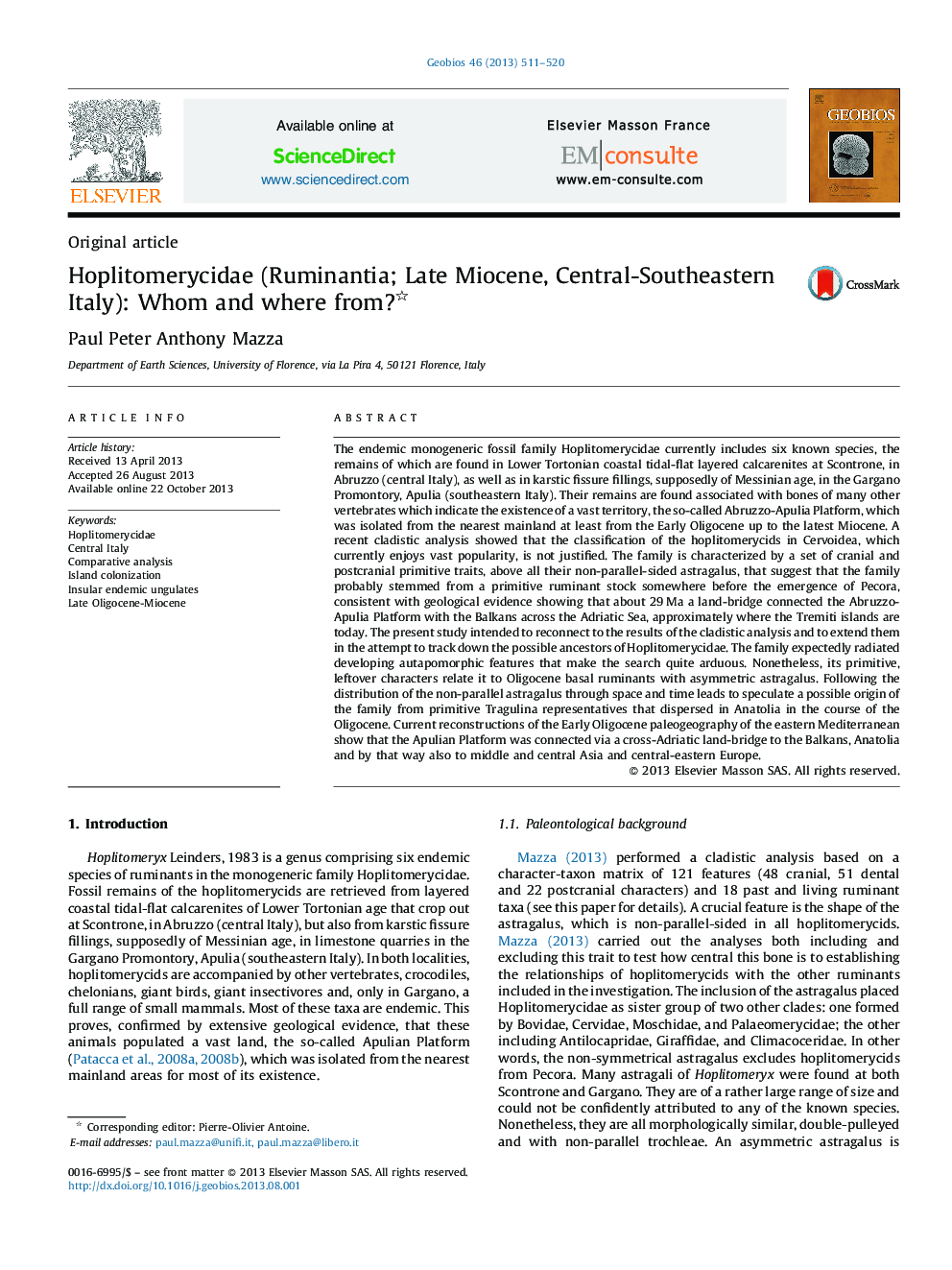| کد مقاله | کد نشریه | سال انتشار | مقاله انگلیسی | نسخه تمام متن |
|---|---|---|---|---|
| 4748060 | 1360077 | 2013 | 10 صفحه PDF | دانلود رایگان |
عنوان انگلیسی مقاله ISI
Hoplitomerycidae (Ruminantia; Late Miocene, Central-Southeastern Italy): Whom and where from?
دانلود مقاله + سفارش ترجمه
دانلود مقاله ISI انگلیسی
رایگان برای ایرانیان
کلمات کلیدی
موضوعات مرتبط
مهندسی و علوم پایه
علوم زمین و سیارات
فسیل شناسی
پیش نمایش صفحه اول مقاله

چکیده انگلیسی
The endemic monogeneric fossil family Hoplitomerycidae currently includes six known species, the remains of which are found in Lower Tortonian coastal tidal-flat layered calcarenites at Scontrone, in Abruzzo (central Italy), as well as in karstic fissure fillings, supposedly of Messinian age, in the Gargano Promontory, Apulia (southeastern Italy). Their remains are found associated with bones of many other vertebrates which indicate the existence of a vast territory, the so-called Abruzzo-Apulia Platform, which was isolated from the nearest mainland at least from the Early Oligocene up to the latest Miocene. A recent cladistic analysis showed that the classification of the hoplitomerycids in Cervoidea, which currently enjoys vast popularity, is not justified. The family is characterized by a set of cranial and postcranial primitive traits, above all their non-parallel-sided astragalus, that suggest that the family probably stemmed from a primitive ruminant stock somewhere before the emergence of Pecora, consistent with geological evidence showing that about 29Â Ma a land-bridge connected the Abruzzo-Apulia Platform with the Balkans across the Adriatic Sea, approximately where the Tremiti islands are today. The present study intended to reconnect to the results of the cladistic analysis and to extend them in the attempt to track down the possible ancestors of Hoplitomerycidae. The family expectedly radiated developing autapomorphic features that make the search quite arduous. Nonetheless, its primitive, leftover characters relate it to Oligocene basal ruminants with asymmetric astragalus. Following the distribution of the non-parallel astragalus through space and time leads to speculate a possible origin of the family from primitive Tragulina representatives that dispersed in Anatolia in the course of the Oligocene. Current reconstructions of the Early Oligocene paleogeography of the eastern Mediterranean show that the Apulian Platform was connected via a cross-Adriatic land-bridge to the Balkans, Anatolia and by that way also to middle and central Asia and central-eastern Europe.
ناشر
Database: Elsevier - ScienceDirect (ساینس دایرکت)
Journal: Geobios - Volume 46, Issue 6, NovemberâDecember 2013, Pages 511-520
Journal: Geobios - Volume 46, Issue 6, NovemberâDecember 2013, Pages 511-520
نویسندگان
Paul Peter Anthony Mazza,